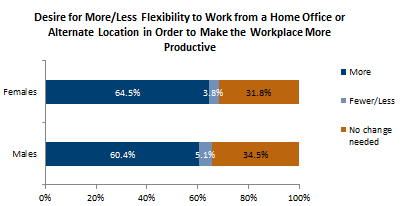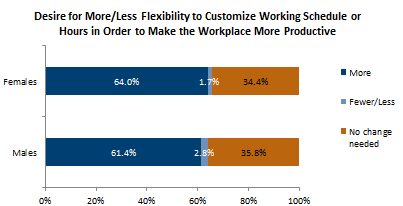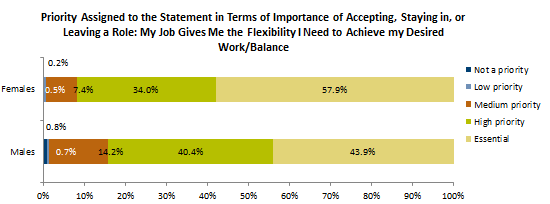In my not so recent past, I was a divorced single mother, working full-time, and going part-time to a local state university for my Ph.D. That was hard. The word that I used for my life during those days was satisficing – It generally means you do the minimum on all fronts to get by.

Today, I am newly re-married. I just finished my Ph.D. I am still a career woman. I work full-time, and try to balance full-time work, childcare of a 12 year old involved in numerous sporting activities, responsibilities for two canines, a household, and paying attention to my marriage. My life is about one word these days: Balance. That means that I need to somehow fit into a day of limited hours many, many, many competing demands for my time. And I know I am not alone in this. There are millions of women (and men, I am sure) who feel the same way.
I like to call this phenomenon of wanting it all (career, salary, workplace flexibility, work life balance) the “both/and” paradigm. Employees today want both a good career, and a good salary to support their families, and a healthy work life balance. They don’t want to have to choose, say, a good salary or having to travel all the time for work. They want the ability to work according to flexible arrangements when it is more efficient. Like their employers, they have very high expectations, and with the recent rise of collaborative, social, and virtual technologies there are many more possibilities today for working arrangements than ever before.

In part to explore the topic of work life balance, including flexibility and mobility, and other facets of workplace environment desired by today’s workers, APQC recently conducted a survey about the elements of the workspace of the future. The survey had over 1,000 participants. Our analysis had some very interesting findings when it comes to a comparison across the dimensions of gender in terms of some of these issues, specifically when it comes to the desire for workplace flexibility by males as compared to females.
For example, when it comes to the wish to work from home, the study found that more females have a desire for more flexibility to work from a home office or alternate location to make the workplace more productive (Figure 1).
Similarly, more female participants than males had a desire to customize their working schedule and hours (Figure 2).
 And even more tellingly, more females say flexibility and work/balance is either essential or a high priority in terms of choosing a role, staying, or determining to leave a role (Figure 3).
And even more tellingly, more females say flexibility and work/balance is either essential or a high priority in terms of choosing a role, staying, or determining to leave a role (Figure 3).
The data from this survey should serve as a wake-up call to employers that a paradigm shift is needed when it comes to various aspects of the workplace of the future, particularly work flexibility and work efficiency and productivity. The paradigm is no longer either/or, but both and.